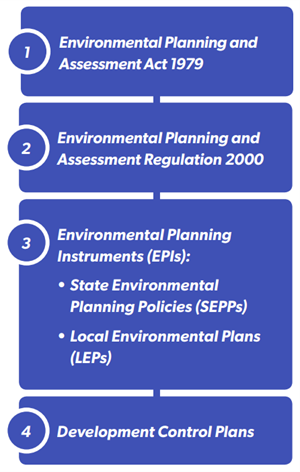Most development applications and certificates must be lodged through the NSW Planning Portal.
How to use the Portal
DA Tracker Property search Get advice DA process
Many forms of development require Council approval, this is called development consent.
You apply for development consent by lodging a DA. You may need to provide technical reports and plans with your DA application.
Read more about home renovations and what you need approval for.
Disclosure of political donations and gifts
The Environmental Planning and Assessment Act 1979 requires the public disclosure of donations or gifts when lodging or commenting on development proposals. This law is designed to improve the transparency of the planning system.
The laws set out disclosure requirements for individuals or entities with a relevant financial interest as part of the lodgement of:
- various types of development proposals
- requests to initiate environmental planning instruments or development control plans.
These disclosure requirements apply at the time of lodgement to councils or the NSW Government. It is the responsibility of the applicant to ensure they have met the requirements specified under the Act. Disclosure requirements also apply to individuals or entities lodging submissions in objection or support to these types of proposals.
For more information, visit the NSW Department of Planning, Industry and Environment website
Variations to Development Standards Register
Clause 4.6 of the Local Environment Plan (LEP) provides a process by which an application can include a request to vary a development standard in the LEP.
Determinations of requests for variations under Clause 4.6 are reported quarterly to the Department of Planning, Industry and Environment.
If you feel there is strong justification to depart from a statutory standard you must lodge an objection under Clause 4.6 of the LEP.
The Land and Environment Court, directions from the State Government and the Act have defined how a Clause 4.6 objection should be written and how the justification to the departure from the statutory standard in the EPI must be framed.
We recommend you use a consultant town planner or other land use professional to assist you in preparing a Clause 4.6 objection.
Below is a list of the Clause 4.6 variations for Tweed Shire Council for the last 5 years. Contact us for earlier years.
What is a development application?
Development Applications (DAs) are a formal request for permission to carry out a proposed development, including building, subdividing, change of land use, landscaping or other works.
The DA process can be confusing, the information below will help you prepare and lodge a DA. You can also get advice from us or engage a qualified professional to help.
Building a new home or renovating?
DAs are required for most types of development on your property, including:
- new house, shed, carport, garage or awning
- alterations or additions to an existing dwelling or business
- structural changes to create a home business at your premises
- swimming pool installation
- demolishing a structure
- removing a tree.
State and local planning legislation and policies set the rules that control what development can occur on your land.
Use the Property search tool to find out if there are any planning and development constraints on the land. This will help you understand the development potential of a property.
Find out more about buying or selling property.
Where do I start?
Use the links below to learn more about the DA process:
Working with Council
Council is committed to planning for the future and making sure the Tweed remains a great place to live.
We assess applications against increasingly complex planning and building codes.
Talk to us first
The DA process can be confusing. We encourage you to make an appointment to discuss your plans.
Do I need development consent from Council?
Check if you need development approval.
Why are DAs required?
Planning controls are in place to manage the environmental, economic and social impacts of development.
A DA is required to:
- manage the cumulative effects of development
- avoid negative impacts on the environment
- ensure impacts on amenity are considered
- ensure new developments are in keeping with the area
- allow community members to raise issues
- ensure that infrastructure is provided (such as stormwater drainage)
- ensure buildings are structurally safe, ventilated and protected from fire
The DA process helps to ensure balanced and considered outcomes for all.

Land use and planning controls
The planning system is controlled at national, state and local levels of government.
DA assessments are guided by:
LEPs and SEPPs are Environmental Planning Instruments that consider local and state issues.
SEPPs deal with issues that are important to the whole state. Not every SEPP will be relevant to your DA.
Local Environmental Plans (LEPs)
Each council has its own LEPs. They list the types of development allowed in each zone (and those that do not need development consent).
View Tweed LEPs
Development Control Plan (DCP)
The Tweed Development Control Plan (DCP) provides detailed design and planning guidelines on specific issues:
- building design, siting and size
- access to sunlight
- view sharing
- landscaping
- car parking
- heritage
- stormwater treatment
- waste management
- fences and walls
- subdivisions
The DCP provide guidance only, which means there can be flexibility to make variations when supported by a good argument in your DA.
View Tweed DCP
Next steps
I have development consent, what's next?
Your development consent is an approval to carry out the development proposed in your DA. Make sure you read any conditions and know what needs to be completed before, during and after construction.
Before you start any building work you need a Construction Certificate (approval to build).